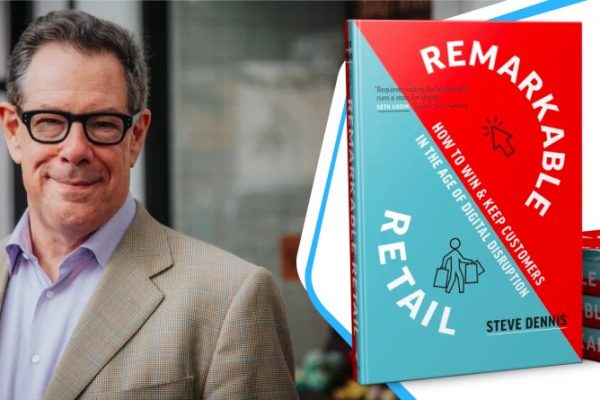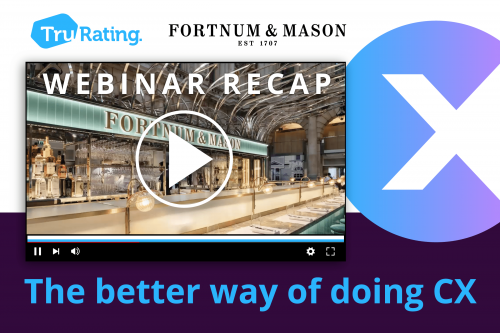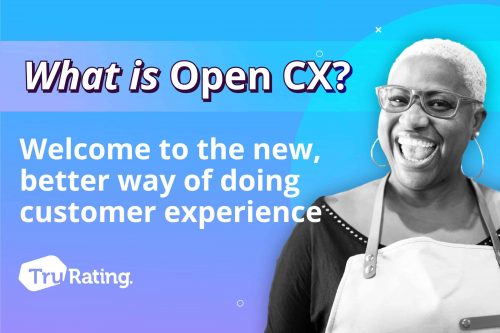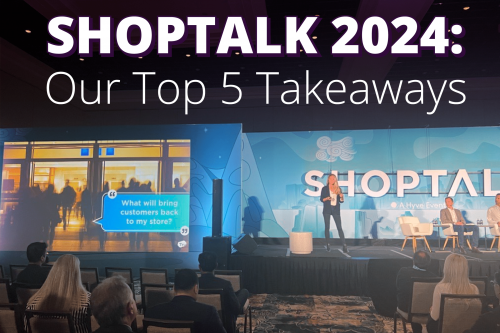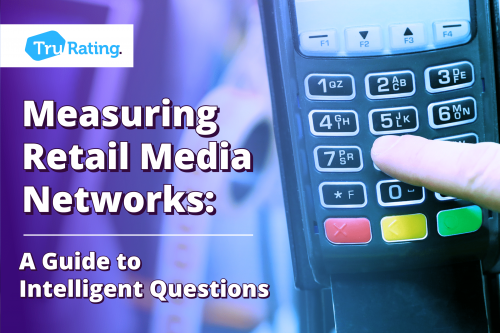When it comes to retail, Steve Dennis is a reliable go to for an interesting viewpoint. With a career spanning leadership roles at both Sears and Neiman Marcus, for the last 10 years or so Steve has made a name for himself on the retail circuit as a consultant, keynote speaker and thought leader of repute. Steve’s writing on retail can be found in his regular columns as a Senior Contributor for Forbes, but he recently added another feather to his cap with the publication of his first book, Remarkable Retail.
The culmination of a career of hard earned experience, Remarkable Retail – subtitled ‘How to Win & Keep Customers in the Age of Digital Disruption’ – really is essential reading for any one working in the industry. Functioning as something of a practical guidebook for leadership, the book offers a concise diagnosis of some of the key issues impacting retail today, before offering a path forward (for those who open to it) in the second half of the book, ‘The Journey to Remarkable’.
Interesting, digestible and shot through with gold, we couldn’t recommend it enough. We were delighted to get to spend some time with Steve, talking through some of the ideas in the book and getting a peak behind the curtain into his creative process.
The title of your book – Remarkable Retail – how did you come to it? Did you know this would be the title when you first started writing?
My friend Seth Godin had written this book Purple Cow a number of years ago. What I remember about that book was the idea that we are living in a world of growing abundance and choice. When all you see is cows, cows, cows – it becomes quite boring. Sometimes it takes being a purple cow to stand out, or as Seth put it, to be remarkable.
The reality is it’s hard to achieve even a basic level of competitive differentiation without being really special, really different – in retail you can be fantastically luxurious or fantastically convenient and affordable, but the middle is just a no man’s land. Seth basically laid out this idea of striving for remarkable as the target, and it caught on, so it seemed like a good fit.
I knew that part one was going to be a sort of situational assessment, what’s really going on in retail, and that part two would be the, okay, now what do we do about it section. Originally, I wanted to include a third part, focused on innovation, but in the end my publisher said that’s a whole book in itself, so we cut it down to the two that are there today.
I’d like to focus on the second part of the book, which really feels like a practical guidebook for anyone working in retail today. It’s titled the Journey to Remarkable and in it you cover the ‘8 Essentials of Retail’ – how did you come up with them?
It stems from my time at Neiman Marcus, when I was trying to get excited about this new world and opportunity. I worked on the idea of these frameworks as a way to get my thoughts together and to build out some structure to what I was doing. As I continued working with clients, leading workshops and giving keynotes, the idea of the framework became more and more comprehensive, really through just an iterative process. By the time I started to think about the book, I wanted to have something that you could sort of hit people over the head with as a mission statement, so that’s how it came to be.
One of the problems you seem to be addressing in your book is a kind of inherent conservatism within retail – could you talk to that a little?
If you think about traditional retail, looking back to the department store and the retailers that basically spun out of department stores – that was a time when being a really good merchant was what mattered. Everything was focused on product, product, product. It was all about what you could sell through the physical store. When these merchants started to realize that e-commerce was something they needed to pay attention to – the tendency was at first to treat it as though it were a different entity entirely, almost a completely separate business. It reinforced a silo mentality that we still speak of today.
For someone who’s orientation and experience is brick and mortar retail, the focus is mainly about getting people to your store, converting the sale and then trying to repeat the process again and again. Traditionally this was done through great merchandising, product nicely presented and priced just right. But then digital comes along and completely changes this. I like to talk about the ‘best location’, where to put your best foot forward to get the customers attention. Today, more often than not, the best location is a customers’ mobile device when they enter shopping mode.
Which is just so different to the old way of thinking.
Is innovation possible without the correct alignment at the top of your organisation?
No. Twice in my career, I’ve been the senior executive ostensibly responsible for innovation. We would come up with ideas and we would make recommendations, but we couldn’t make anything happen – despite me having ‘Senior Vice President’ in my title. If you don’t have an impetus for change coming from the top or someone doesn’t want to listen to a recommendation – in most cases it simply won’t, however much you push.
Innovation, sadly, is not an inherent skill for the traditional retail mindset. Look at a company like Nike, at their core they’re an innovation company, they see retail as a means to an end. They’re ultimately focused on delivering exceptional experiences, wherever they might happen to take place.
Innovation, sadly, is not an inherent skill for the traditional retail mindset.
Do you think retail is becoming better at using data to drive decision making – and could that help with the kind of innovation inertia you describe here?
I tend to put companies into three categories when it comes to data capability.
The first are the totally clueless – those who have so little capability that they’re basically beyond saving. The second are that group of companies who are incredibly data savvy – it’s often digitally native vertical brands that fall into this category. Those who have had the advantage to start online, and not create a separate ‘data diet’ so to speak.
Then there is this grouping that sits somewhere in the middle. If you asked the CEO of one these companies about the core principles driving their business, I’d be surprised if you didn’t hear mention of ‘personalization’ or discussion of being ‘data driven’, but ultimately, it’s not a central part of their strategy. When I was at Neiman’s I’d say we sat there. Even though we had a lot of data and did some really interesting modelling of cross-channel behaviour for instance, when we went to the buying teams to provide suggestions based on our work, it just didn’t seem to make any difference. I don’t know if they just didn’t understand it or what, but thinking about it again, ultimately it comes back leadership.
Are they focused on innovation? If yes, you have a chance, if not, then you’ll find it tough.
Was part of your impetus to write the book a wish that you’d had something like it to hand when you worked in retail?
You’ve probably heard people say write the book that you want to read…
I wanted to produce something that was both a model for strategic business design and also pragmatic enough for people to actually engage with and use. I think there are some pretty good historical books on retail and there are some fairly abstract ‘here’s the future’ type books – I guess I wanted to strike somewhere in between. Something that could provide food for thought at a strategic level, but also something that people could translate into action.
Do you see the essentials as a series of steps that businesses should follow?
I don’t like to call the essentials steps because I think that suggests there’s a sequence to them, I’d say they are more like ingredients. At a risk of overplaying the analogy, retail is a complicated stew – there’s an interesting mix of things that go into something that works. It’s not as simple as saying Restoration Hardware or Starbucks is successful because of this one particular thing they do, it’s a combination of product and experience and interaction and visual…
I sort of think of the essentials at the strategic level like being the ingredients that you get to choose from as a leader. You still have to work to translate them into a recipe that’s right for your particular situation but based on my own experience and having worked with many companies over the years, I think that all eight are relevant to some degree in pretty much every situation.
You have a lot of quotes throughout the book, from outside the world of retail – how important do you think it is to look outside of your industry for inspiration?
I think it’s huge.
In today’s world you’re only as good as your customers last experience. Let’s say you buy something on Amazon and your cart experience works really well and then you go to book an appointment with your doctor and it’s just a nightmare. As consumers we don’t really differentiate between the two anymore – why does that second experience have to be so clunky, when we’ve seen it done well elsewhere? And I think this holds true for retail generally – if you’re not paying attention to what’s going on in the broad world of customer experience or technology disruption, then you’re probably missing the boat.
There’s a lot to be said for the beginner’s mind idea of just trying to start fresh with a problem and trying to look at it without too much bias. It’s probably not the greatest example, but even when I was writing the book, I probably spent too much time looking at other books that were similar to my own. Some of it was research, some of it practical to make sure I wasn’t recycling other people’s ideas, but I found myself starting to subconsciously try and write a ‘certain kind of book’.
Even my generally wonderful publisher had some set ideas about what a retail book looks like. They weren’t wild about all the headings and quotations you mention first, but in the end, I decided this is my book, I have to write it how I see best fit.
Do you think there are any parallels with retail there?
Look with any creative endeavour, whether artistic or business focused, it can be tough to go against the grain. There’s a tendency to presume that human beings or consumers need everything to be in a particular box or frame to make sense of the world, particularly when you’re selling mass product.
Always go a little further into the water than you feel you’re capable of being in. Go a little bit out of your depth. And when you don’t feel that your feet are quite touching the bottom, you’re just about in the right place to do something exciting – David Bowie
I love the David Bowie quote in the book, about not quite having your feet on the ground, because ultimately that’s where I think the most interesting stuff happens. Most companies are just not wired that way, but the ones that are, that have built that openness and a mindset willing to experiment into their DNA – they’re the ones that really stand out, and are doing the most exciting things.
Keeping on topic then, what were three pieces of art or creative works that inspired you while writing?
Hmm… I’d say Stephen Pressfield’s ‘The War of Art’ – I think he really deals with, in a non-business way, how to overcome the fear that often keeps us stuck. Purple Cow would be in there and, this maybe be a little bit out there in terms of fitting with my book but I might say Joseph Campell’s The Hero’s Journey. I think that really good storytelling is one of the hardest things to translate into good business – but how we tell stories whether in business or in a book or as a brand, is so important for ultimately getting people to engage with and buy into what you’re trying to do, whatever your field.
_______
A huge thank you to Steve for taking the time to speak to us, we hope you enjoyed our conversation and heartily encourage you to get online and buy a copy of the book today.
Check out Indie Bound to support your local bookseller if you’re able, if not there’s one rather larger bookseller where you’ll be able to find a copy – if going through that channel why not leave a nice review for Steve while you’re at, they all help.
Follow Steve on Twitter and be sure to check out his regular Forbes contributions also.


